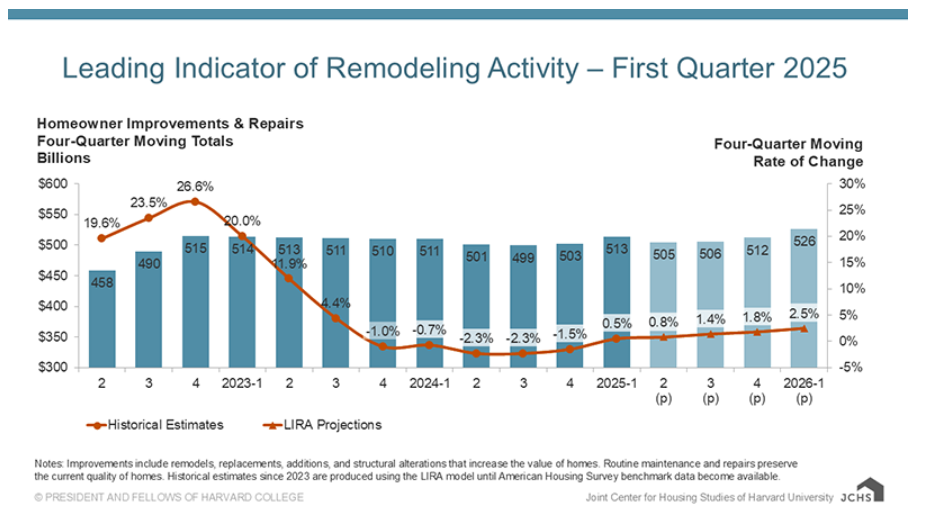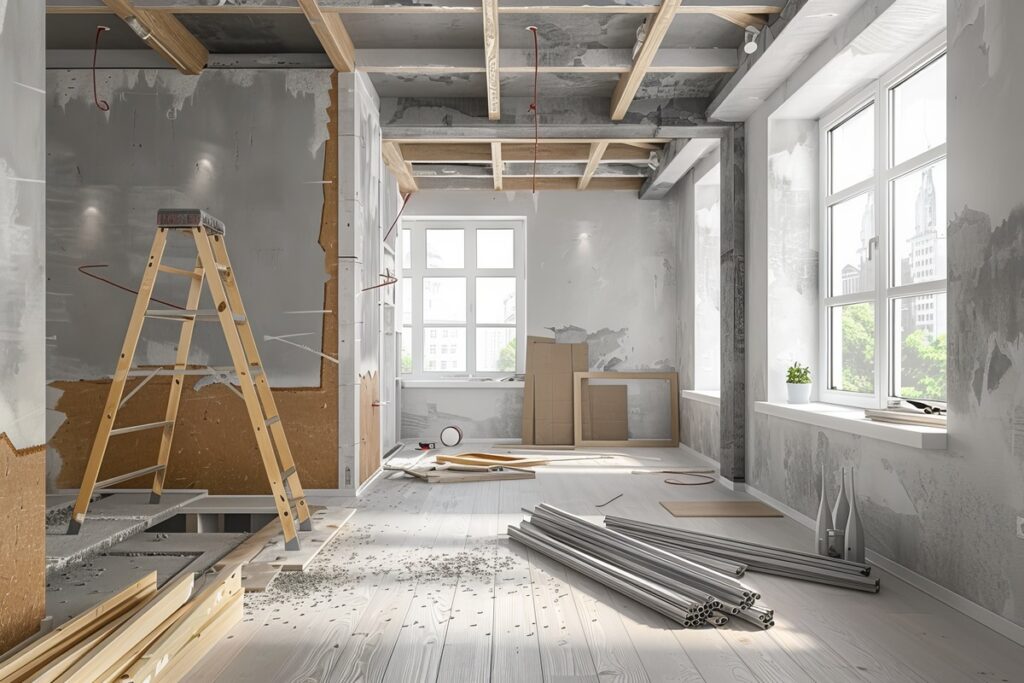Annual spending on home improvements and maintenance is projected to rise steadily, reaching a record $526 billion by the first quarter of 2026, according to the latest Leading Indicator of Remodeling Activity (LIRA) from the Joint Center for Housing Studies.
After a dip that followed pandemic-era peaks in renovation activity, the remodeling market is stabilizing, with year-over-year growth in homeowner improvement and repair expenditures forecast to increase by 2.5%. Much of this recovery is being fueled by recent upticks in existing-home sales, which often spur renovation spending by both new buyers and sellers preparing their homes for the market.

“So far, high home values and other strong economic indicators have supported an uptick in homeowner improvement spending,” according to a summary of the LIRA report by Carlos Martín, Director of the Remodelling Futures Program at Harvard. Those elevated property values give homeowners more equity to tap into for repairs, updates, and upgrades.
Still, the outlook comes with caution. The LIRA notes that ongoing economic volatility could put pressure on the pace of remodeling activity in the coming quarters. Uncertainty tied to foreign tariffs and declining consumer confidence may “dampen this expected growth,” especially if broader economic conditions begin to deteriorate.
While growth is not expected to return to the post-2020 highs, when pandemic-driven nesting and stimulus-fueled budgets sparked record renovation booms, the remodeling industry is positioned to continue expanding — albeit at a slower, more sustainable pace. The combination of aging housing stock, higher home equity, and still-low for-sale inventory may keep demand for renovations elevated as homeowners choose to improve rather than move.
Overall, the modest 2.5% increase projected through early 2026 reflects a market finding balance after several turbulent years. Industry professionals and homeowners alike are adjusting to a new remodeling normal — one driven less by emergency upgrades and more by long-term investment in existing homes.
Click here for more on the Harvard Joint Center for Housing Studies report on the future of home remodeling.






